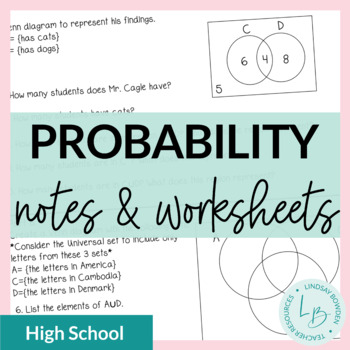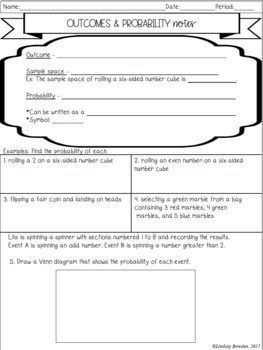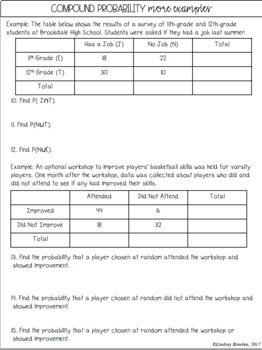Probability Guided Notes and Worksheets
- Zip
What educators are saying
Also included in
- Get a complete High School Compound and Conditional Probability unit including lessons on set theory, outcomes, and basic, compound, and conditional probability, and more! These ready-to-use resources include everything you need to teach high school probability to your on-level or lower-level/speciPrice $32.00Original Price $32.00
- Get a complete High School Geometry Notes and Worksheets Bundle with units on geometry terms, transformations, circles, parallel and perpendicular lines, quadrilaterals, right triangle trig., and more! These ready-to-use geometry resources include notes and worksheets for an entire year.*No Video LPrice $140.00Original Price $175.00Save $35.00
Description
These probability notes and worksheets cover all of the compound and conditionality probability standards for high school.
Topics covered:
- set theory (union, intersection, complement, Venn diagrams)
- outcomes and basic probability (coins, dice, tree diagrams, Fundamental Counting Principle)
- compound probability (addition and multiplication rules)
- conditional probability (both independent and dependent)
Students must have a basic knowledge of a standard deck of playing cards to complete some of the notes/worksheets. I always print out a picture of the 52 cards by suit. I even let students have a "card day" where they play with cards and learn the suits/types!
*17 pages + all answer keys included!
These notes pair great with my:
**Or get my complete Probability Unit Bundle!
Terms of Use:
This product should only be used by the teacher who purchased it. This product is not to be shared with other teachers. Please buy the correct number of licenses if this is to be used by more than one teacher.
Did you know?
You can receive TPT store credits to use on future purchases by leaving feedback on products you buy! Just click on "My Purchases" under "Buy"!
Connect with me!







